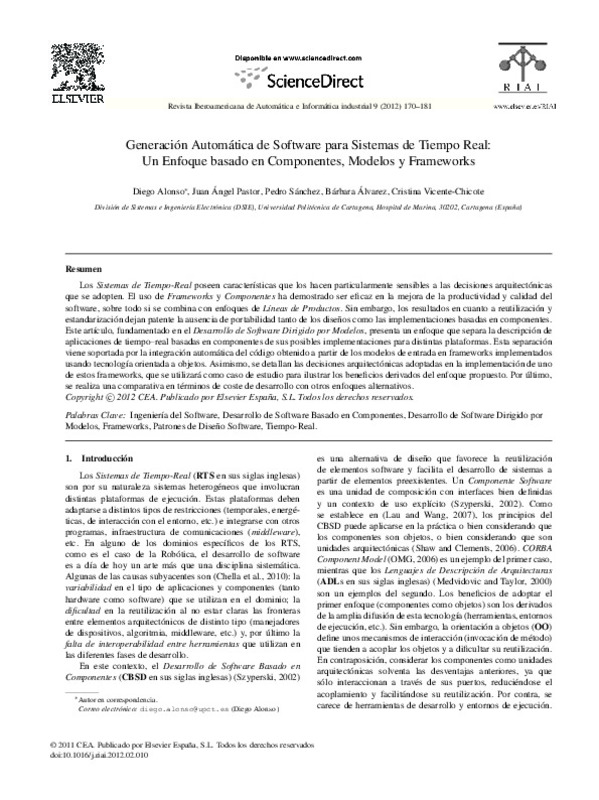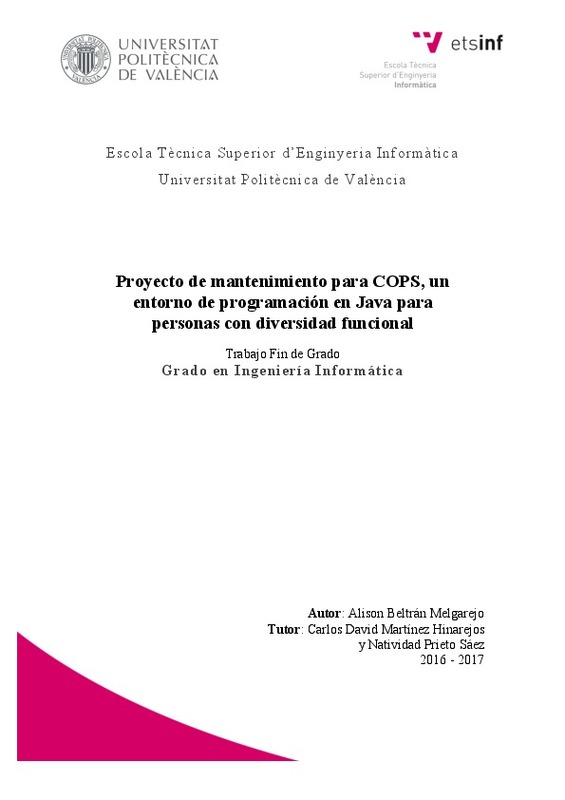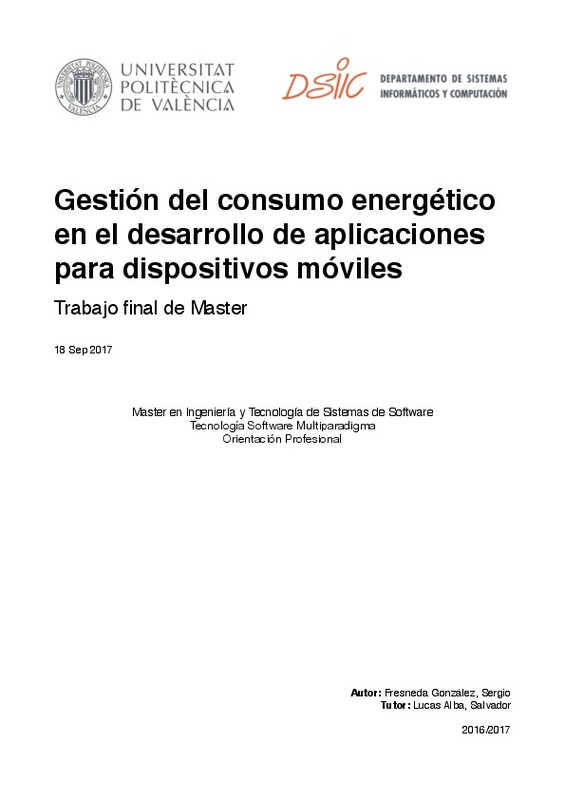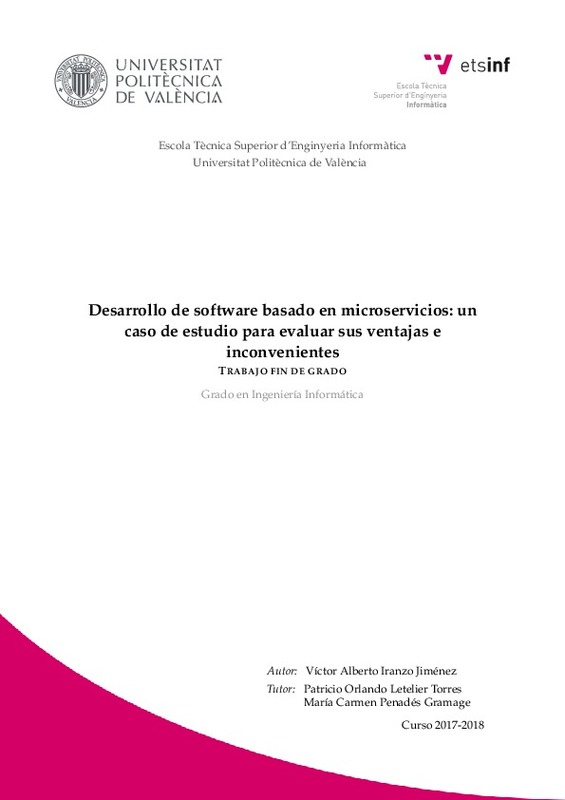JavaScript is disabled for your browser. Some features of this site may not work without it.
Buscar en RiuNet
Listar
Mi cuenta
Estadísticas
Ayuda RiuNet
Admin. UPV
Generación Automática de Software para Sistemas de Tiempo Real: Un Enfoque basado en Componentes, Modelos y Frameworks
Mostrar el registro sencillo del ítem
Ficheros en el ítem
| dc.contributor.author | Alonso, Diego
|
es_ES |
| dc.contributor.author | Pastor, Juan Ángel
|
es_ES |
| dc.contributor.author | Sánchez, Pedro
|
es_ES |
| dc.contributor.author | Álvarez, Bárbara
|
es_ES |
| dc.contributor.author | Vicente Chicote, Cristina
|
es_ES |
| dc.date.accessioned | 2020-05-26T13:10:10Z | |
| dc.date.available | 2020-05-26T13:10:10Z | |
| dc.date.issued | 2012-04-09 | |
| dc.identifier.issn | 1697-7912 | |
| dc.identifier.uri | http://hdl.handle.net/10251/144365 | |
| dc.description.abstract | [EN] Real-Time Systems have some characteristics that make them particularly sensitive to architectural decisions. The use of Frameworks and Components has proven effective in improving productivity and software quality, especially when combined with Software Product Line approaches. However, the results in terms of software reuse and standardization make the lack of portability of both the design and componentbased implementations clear. This article, based on the Model- Driven Software Development paradigm, presents an approach that separates the component-based description of real-time applications from their possible implementations on different platforms. This separation is supported by the automatic integration of the code obtained from the input models into object-oriented frameworks. The article also details the architectural decisions taken in the implementation of one of such frameworks, which is used as a case study to illustrate the proposed approach. Finally, a comparison with other alternative approaches is made in terms of development cost. | es_ES |
| dc.description.abstract | [ES] Los Sistemas de Tiempo-Real poseen características que los hacen particularmente sensibles a las decisiones arquitectónicas que se adopten. El uso de Frameworks y Componentes ha demostrado ser eficaz en la mejora de la productividad y calidad del software, sobre todo si se combina con enfoques de Líneas de Productos. Sin embargo, los resultados en cuanto a reutilización y estandarización dejan patente la ausencia de portabilidad tanto de los diseños como las implementaciones basadas en componentes. Este artículo, fundamentado en el Desarrollo de Software Dirigido por Modelos, presenta un enfoque que separa la descripción de aplicaciones de tiempo–real basadas en componentes de sus posibles implementaciones para distintas plataformas. Esta separación viene soportada por la integración automática del código obtenido a partir de los modelos de entrada en frameworks implementados usando tecnología orientada a objetos. Asimismo, se detallan las decisiones arquitectónicas adoptadas en la implementación de uno de estos frameworks, que se utilizará como caso de estudio para ilustrar los beneficios derivados del enfoque propuesto. Por último, se realiza una comparativa en términos de coste de desarrollo con otros enfoques alternativos. | es_ES |
| dc.description.sponsorship | Este trabajo ha sido parcialmente financiado por los proyectos EXPLORE (CICYT ref. TIN2009-08572) y MISSION-SICUVA (Fundación Séneca ref. 15374/PI/10). | es_ES |
| dc.language | Español | es_ES |
| dc.publisher | Elsevier | es_ES |
| dc.relation.ispartof | Revista Iberoamericana de Automática e Informática industrial | es_ES |
| dc.rights | Reserva de todos los derechos | es_ES |
| dc.subject | Software Engineering | es_ES |
| dc.subject | Component-Based Software Development | es_ES |
| dc.subject | Model-Driven Software Development | es_ES |
| dc.subject | Framework | es_ES |
| dc.subject | Software Design Patterns | es_ES |
| dc.subject | Real-Time | es_ES |
| dc.subject | Ingeniería del Software | es_ES |
| dc.subject | Desarrollo de Software Basado en Componentes | es_ES |
| dc.subject | Desarrollo de Software Dirigido por Modelos | es_ES |
| dc.subject | Frameworks | es_ES |
| dc.subject | Patrones de Diseño Software | es_ES |
| dc.subject | Tiempo-Real | es_ES |
| dc.title | Generación Automática de Software para Sistemas de Tiempo Real: Un Enfoque basado en Componentes, Modelos y Frameworks | es_ES |
| dc.title.alternative | Automatic Code Generation for Real–Time Systems: a Development Approach based on Components, Models, and Frameworks | es_ES |
| dc.type | Artículo | es_ES |
| dc.identifier.doi | 10.1016/j.riai.2012.02.010 | |
| dc.relation.projectID | info:eu-repo/grantAgreement/MICINN//TIN2009-08572/ES/Patrones De Diseño Y Modelos Para El Desarrollo De Sistemas De Tiempo Real/ | es_ES |
| dc.relation.projectID | info:eu-repo/grantAgreement/Gobierno de la Región de Murcia//15374%2FPI%2F10/ES/No Informado/ | es_ES |
| dc.rights.accessRights | Abierto | es_ES |
| dc.description.bibliographicCitation | Alonso, D.; Pastor, JÁ.; Sánchez, P.; Álvarez, B.; Vicente Chicote, C. (2012). Generación Automática de Software para Sistemas de Tiempo Real: Un Enfoque basado en Componentes, Modelos y Frameworks. Revista Iberoamericana de Automática e Informática industrial. 9(2):170-181. https://doi.org/10.1016/j.riai.2012.02.010 | es_ES |
| dc.description.accrualMethod | OJS | es_ES |
| dc.relation.publisherversion | https://doi.org/10.1016/j.riai.2012.02.010 | es_ES |
| dc.description.upvformatpinicio | 170 | es_ES |
| dc.description.upvformatpfin | 181 | es_ES |
| dc.type.version | info:eu-repo/semantics/publishedVersion | es_ES |
| dc.description.volume | 9 | es_ES |
| dc.description.issue | 2 | es_ES |
| dc.identifier.eissn | 1697-7920 | |
| dc.relation.pasarela | OJS\9612 | es_ES |
| dc.contributor.funder | Comunidad Autónoma de la Región de Murcia | es_ES |
| dc.contributor.funder | Ministerio de Ciencia e Innovación | es_ES |
| dc.description.references | Antkiewicz, M., Czarnecki, K., & Stephan, M. (2009). Engineering of Framework-Specific Modeling Languages. IEEE Transactions on Software Engineering, 35(6), 795-824. doi:10.1109/tse.2009.30 | es_ES |
| dc.description.references | Artist-ESD, 2008-2011. ArtistDesign - European Network of Excellence on Embedded Systems Design. URL: http://www.artist-embedded.org/. | es_ES |
| dc.description.references | Atkinson, C., Bayer, J., Bunse, C., Kamsties, E., Laitenberger, O., Laqua, R., Muthig, D., Paech, B., Wüst, J., Zettel, J., 2001. Component-based product line engineering with UML. A-W Prof. | es_ES |
| dc.description.references | Autosar, 2008-2011. AUTOSAR: Automotive Open System Architecture. URL: http://www.autosar.org/. | es_ES |
| dc.description.references | Bensalem, S., Gallien, M., Ingrand, F., Kahloul, I., & Thanh-Hung, N. (2009). Designing autonomous robots. IEEE Robotics & Automation Magazine, 16(1), 67-77. doi:10.1109/mra.2008.931631 | es_ES |
| dc.description.references | Blair, G., Coupaye, T., Stefani, J. (Eds.), 2009. Annals of Telecommunication. Component-based architecture: the Fractal initiative. Vol. 64. Springer-Verlag. | es_ES |
| dc.description.references | Brooks, A., Kaupp, T., Makarenko, A., Williams, S., Oreback, A., 2007. Software Engineering for Experimental Robotics. Vol. 30 of STAR. Springer-Verlag, Ch. ORCA: A component model and repository, pp. 231-252. | es_ES |
| dc.description.references | Bruyninckx, H., 2001. Open Robot Control Software: the OROCOS project. Proc. of the IEEE International Conference on Robotics and Automation. Vol. 3. IEEE, pp. 2523-2528. | es_ES |
| dc.description.references | Hard Real-Time Ada Systems. Elsevier Science. | es_ES |
| dc.description.references | Carlson, J., Håkansson, J., & Pettersson, P. (2006). SaveCCM: An Analysable Component Model for Real-Time Systems. Electronic Notes in Theoretical Computer Science, 160, 127-140. doi:10.1016/j.entcs.2006.05.019 | es_ES |
| dc.description.references | Chella, A., Cossentino, M., Gaglio, S., Sabatucci, L., & Seidita, V. (2010). Agent-oriented software patterns for rapid and affordable robot programming. Journal of Systems and Software, 83(4), 557-573. doi:10.1016/j.jss.2009.10.035 | es_ES |
| dc.description.references | Childs, A., Greenwald, J., Jung, G., Hoosier, M., & Hatcliff, J. (2006). CALM and Cadena: Metamodeling for Component-Based Product-Line Development. Computer, 39(2), 42-50. doi:10.1109/mc.2006.51 | es_ES |
| dc.description.references | Crnkovic, I., Chaudron, M., & Larsson, S. (2005). Component-based Development Process and Component Lifecycle. Journal of Computing and Information Technology, 13(4), 321. doi:10.2498/cit.2005.04.10 | es_ES |
| dc.description.references | Dominguez-Brito, A.and Hernandez-Sosa, D., Isern-Gonzalez, J., Cabrera-Gamez, J., 2004. Integrating robotics software. In: Proc. of the IEEE Intl. Conference on Robotics and Automation, ICRA 2004. Vol. 4. IEEE, pp.3423-3428. | es_ES |
| dc.description.references | Douglass, B., Feb. 2004. Real Time UML: Advances in the UML for Real-Time Systems. A-W Prof. | es_ES |
| dc.description.references | Fairbanks, G., Garlan, D., Scherlis, W., 2006. Design fragments make using frameworks easier. In: Proc. of the 21st annual ACM SIGPLAN conference on Object-oriented programming systems, languages, and applications, OOPSLA 2006. ACM, pp. 75-88. | es_ES |
| dc.description.references | Fayad, M., Schmidt, D., Johnson, R., 1999. Building Application Frameworks: Object-Oriented Foundations of Framework Design. John Wiley & Sons. | es_ES |
| dc.description.references | Gomaa, H., 2000. Designing Concurrent, Distributed, and Real-Time Applications with UML. Object Technology. Addison-Wesley, iSBN: 0-201-65793-7. | es_ES |
| dc.description.references | Hongxing, W., Xinming, D., Shiyi, L., Guofeng, T., Tianmiao, W., 2009. A component based design framework for robot software architecture. In: Proc. of the 2009 IEEE/RSJ international conference on Intelligent robots and systems, IROS 2009. IEEE, pp. 3429-3434. | es_ES |
| dc.description.references | Iborra, A., Caceres, D. A., Ortiz, F. J., Franco, J. P., Palma, P. S., & Alvarez, B. (2009). Design of service robots. IEEE Robotics & Automation Magazine, 16(1), 24-33. doi:10.1109/mra.2008.931635 | es_ES |
| dc.description.references | Jacobson, I., 1992. Object Oriented Software Engineering: A Use Case Driven Approach. A-W. | es_ES |
| dc.description.references | Lau, K.-K., & Wang, Z. (2007). Software Component Models. IEEE Transactions on Software Engineering, 33(10), 709-724. doi:10.1109/tse.2007.70726 | es_ES |
| dc.description.references | Medvidovic, N., & Taylor, R. N. (2000). A classification and comparison framework for software architecture description languages. IEEE Transactions on Software Engineering, 26(1), 70-93. doi:10.1109/32.825767 | es_ES |
| dc.description.references | Mens, T., & Van Gorp, P. (2006). A Taxonomy of Model Transformation. Electronic Notes in Theoretical Computer Science, 152, 125-142. doi:10.1016/j.entcs.2005.10.021 | es_ES |
| dc.description.references | OMG, Apr. 2006. CORBA Component Model formal/06-04-01 Specification. URL: http://www.omg.org/docs/formal/06-04-01.pdf. | es_ES |
| dc.description.references | OMG, Jun. 2008. MDA success stories. URL: http://www.omg.org/mda/products_success.htm. | es_ES |
| dc.description.references | OMG, 2009. UML Profile for MARTE: Modeling and Analysis of Real-Time Embedded Systems, formal/2009-11-02. URL: http://www.omg.org/spec/MARTE/1.0. | es_ES |
| dc.description.references | OpenEmbeDD, 2008-2011. OpenEmbeDD project, Model Driven Engineering open-source platform for Real-Time & Embedded systems. URL: http://openembedd.org/home_html. | es_ES |
| dc.description.references | Pastor, J., Alonso, D., Sánchez, P., Álvarez, B., Jun. 2010. Towards the definition of a pattern sequence for real-time applications using a modeldriven engineering approach. In: Proc. of the 15th Ada-Europe International Conference on Reliable Software Technologies, Ada Europe 2010. LNCS. Springer-Verlag, pp. 167-180. | es_ES |
| dc.description.references | Shaw, M., & Clements, P. (2006). The golden age of software architecture. IEEE Software, 23(2), 31-39. doi:10.1109/ms.2006.58 | es_ES |
| dc.description.references | Sommerville, I., 2010. Software Engineering, 9th Edition. A-W. | es_ES |
| dc.description.references | Stahl, T., Völter, M., 2006. Model-Driven Software Development: Technology, Engineering, Management. Wiley. | es_ES |
| dc.description.references | Szyperski, C., 2002. Component software: beyond object-oriented programming, 2nd Edition. A-W. | es_ES |
| dc.description.references | Van Ommering, R., van der Linden, F., Kramer, J., & Magee, J. (2000). The Koala component model for consumer electronics software. Computer, 33(3), 78-85. doi:10.1109/2.825699 | es_ES |











